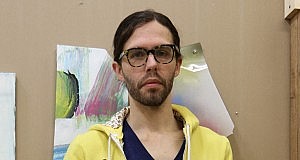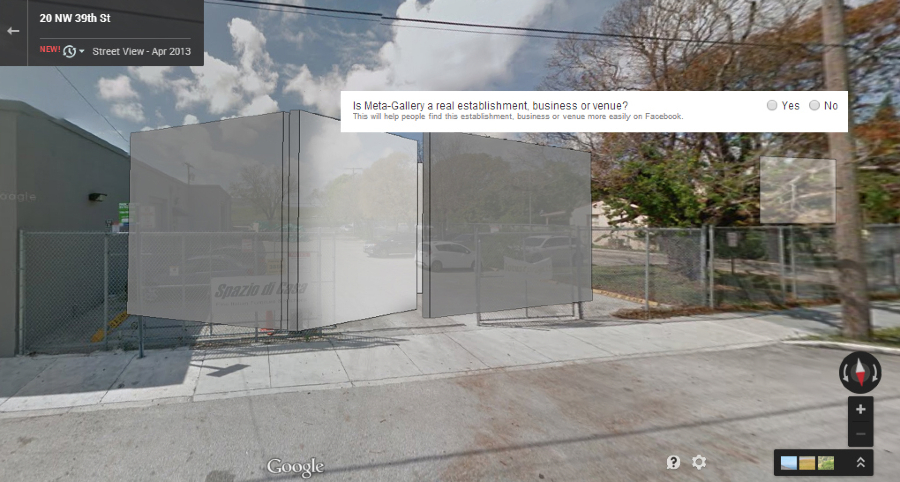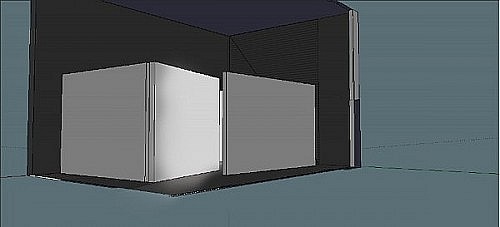
In the past year, second-year Master of Fine Arts Candidate Andrew Horton has been featured in exhibitions at the Young At Art Museum, 6th Street Container, Dimensions Variable (Downtown Art House), and The Patricia & Phillip Frost Art Museum, and has installed work by artist Zhu Jinshi with classmates at the Rubell Family Collection (CARTA News article). In addition, he has written for artisabout.com. This summer, Horton will represent The FIU College of Architecture + The Arts as the selected artist for the Locust Projects’s Locust Arts Builders (LAB) MFA program.
Horton’s proposal submitted to the LAB MFA program is entitled the “Meta-Gallery.” In Locust Projects’s project room, Horton will construct a free-standing, irregularly-shaped and transforming gallery space. It will feature an excessive number of exhibitions, which will change at a seemingly “unreasonable rate,” as Horton put it, within the span of a month.
“The project room of Locust Projects will be turned into an independently functioning, hyper-paced version of an art space,” said Horton. “Programming will be balanced between several scheduled programs and many more planned on the fly. A call for proposals will be sent out and ideas will be accepted to occur within the project space with very little notice.”
The Meta-Gallery will examine the roles of the gallery, curator, and viewer. It will question the normal functions of these three elements. “My proposal to Locust Projects addresses the role of the gallery as a production site and cultural hub and the role of the curator as the manipulator of the medium of the gallery,” said Horton. “Because of the flexibility and temporary nature of the space, it will constantly be shifting how each artist works within the space. The building becomes a participant, as a home and an antagonist to everything happening inside.”
 The Meta-Gallery will have its own social media presence (Facebook) and website, and will even have its own false address, based on the location of the parking lot behind Locust Projects (20 NW 39 Street, Miami, FL). The Meta-Gallery will be an independent space, but will be real yet false, fixed yet moveable, and irregular yet functional.
The Meta-Gallery will have its own social media presence (Facebook) and website, and will even have its own false address, based on the location of the parking lot behind Locust Projects (20 NW 39 Street, Miami, FL). The Meta-Gallery will be an independent space, but will be real yet false, fixed yet moveable, and irregular yet functional.
“I’m honored to be participating in LAB MFA,” said Horton. “The Locust Art Builders program is an amazing opportunity not just for the MFA student lucky enough to get a show often given to a mid-career artist, but also for the high school students in the counterpart program who are given access to the cultural institutions of Miami, its artists, and the space of a gallery. It’s a really interesting program for Locust Projects, and it [endorses] the idea that a gallery can be a place to nurture art production, rather than being simply the place where art is shown after it is made.”
In Summer 2013, MFA Candidate Nick Gilmore was also a LAB MFA artist, presenting his project Quick Millennia and receiving acclaim for his work (CARTA News: MFA Student Nick Gilmore Performs ‘Quick Millenia’ at Locust Projects). Horton assisted his classmate with Quick Millennia, and the FIU Art + Art History Department is proud to see Horton entering the LAB MFA program as a featured artist himself. “[I]t feels a bit like coming home,” he said. “I’ve had a few notable projects this year, but this really feels like the biggest opportunity I’ve had to push my boundaries the furthest.”
Amanda Sanfilippo, Development Associate of Locust Projects explained why Horton was chosen as this Summer’s LAB MFA artist. “LAB MFA extends the mission of Locust Projects of creating a platform for Masters in Fine Arts students in Florida to experiment, push their practice and explore new methods and ideas. MFA candidates are at a critical stage of their practice, so it is important to give them this kind of opportunity at a public venue and let them test the limits of their ideas. Andrew was chosen because his idea was innovative, relevant, and a bit out there. There is room for failure and growth in the project, and there [is] conceptual integrity there.”
For more information on Locust Project’s Locust Arts Builders program, visit their website.
The images in this article are provided courtesy of Andrew Horton.
Follow FIU Art + Art History on Facebook, Twitter, and Instagram.



